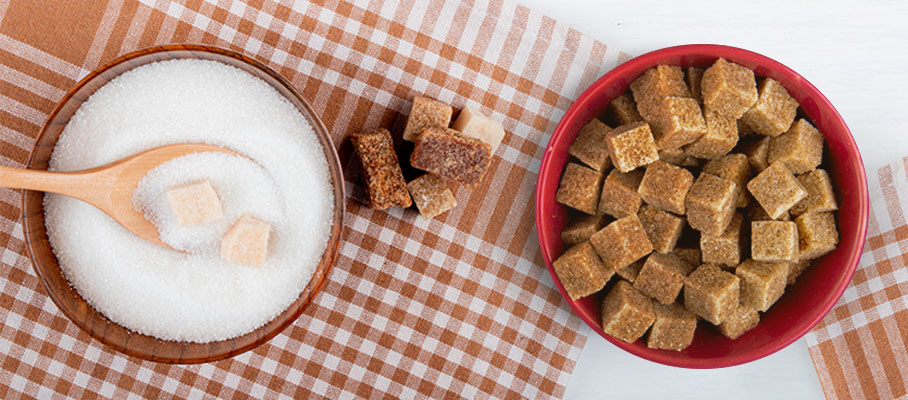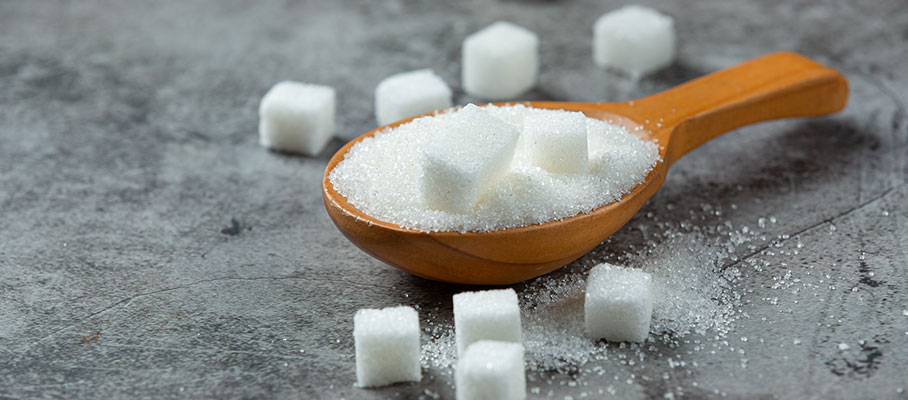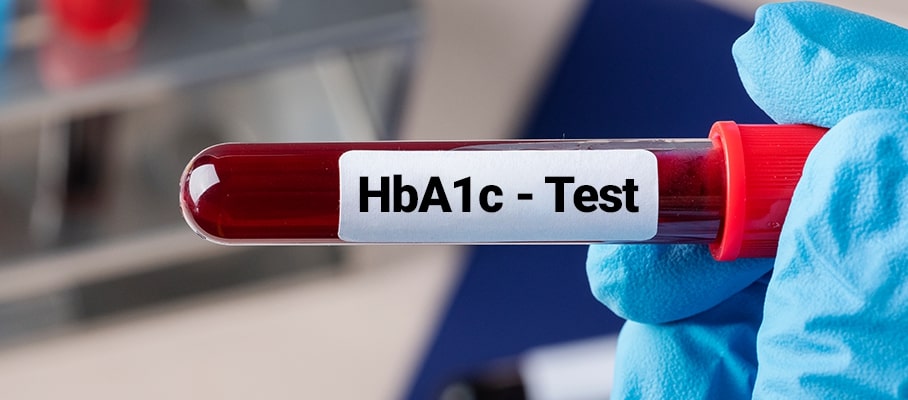Latest Blogs
Debunking Top 5 Myths around Diabetes
Diabetes is a chronic condition that leads to high blood sugar (or glucose), causing a plethora of symptoms and predisposing to various other health conditions such as high blood pressure, kidney disease, etc. While diabetes is highly prevalent among the Indian population with around 72 million people affected, there remains a huge information gap around this condition. Being aware of the authentic scientific facts helps one take the right steps towards diabetes management and delay complications. Here we have provided science-based information on the top 5 myths around diabetes. Myth: Once a diabetic always a diabetic Fact: In the early stages, diabetes can almost be reversed if diet and exercise are taken care of, especially in young people. If your blood sugar is normal with no treatment, then the diabetes is considered to have gone away. Hence, you cannot say that once a diabetic always a diabetic. But remember that even when the blood sugars are controlled, the risk for diabetes always exists. The best thing is to keep following the lifestyle measures even after you have managed to get off the medicines.Want to manage your diabetes well? Get your HbA1c test done regularly and track your blood sugar levels. Myth: If you have a family history of diabetes, you will always develop it in the future. Fact: Having a family history of diabetes has a strong correlation to developing diabetes, but other risk factors such as age, being overweight, how much physical activity you get, and how healthy your diet also play a role. Apparently, many people think that family history is the only risk factor for diabetes, but the fact is even people with no family history of diabetes can develop it, and people having family history but following a healthy lifestyle may not develop diabetes in their lifetimes.Think you can be at risk of getting diabetes due to your family history? Follow a healthful routine and keep an eye on your blood sugar numbers. Myth: People with diabetes need to eat special foods. Fact: Not at all! A healthy diet plan for people with diabetes is usually the same as the principles of healthy eating for anyone. A healthy eating plan includes lots of fiber-rich, low-on-carb vegetables, less sugar, whole grains in place of refined grains, healthy fats, and an abundance of proteins. Fruits like mango and banana can be eaten too. Just that you need to be a bit vigilant of the amounts of foods you consume.Do not blindly trust packaged foods with special “diabetes-friendly” claims. They may still impact your blood sugar levels badly, be more expensive, and/or contain sugar alcohols that can have a laxative effect. It is important to be watchful of how your food impacts your blood sugar levels. Book a post-meal sugar test and get tested at your doorsteps. Myth: Eating too much sugar can cause diabetes. Fact: Diabetes is a complex disease that occurs due to many underlying factors. Though consuming an excess of refined sugar along with other risk factors may increase your risk of getting diabetes, eating too much sugar isn’t a direct cause of diabetes (both type 1 and type 2 diabetes). In fact, (most of) the food we eat is converted to glucose which our body cells use as fuel for energy. A hormone called insulin unlocks our cells and lets glucose get inside. Diabetes occurs when your body fails to produce enough insulin or makes no insulin at all. This leads to an excess of blood sugar in the blood as it cannot enter the cells to be utilized. Myth: I use a blood glucometer at home, so an HbA1c test isn’t needed. Fact: Having a blood glucometer and tracking a constant eye at your blood sugar is no doubt an extremely important step towards better diabetes care. However, it is equally important to get your HbA1c test done. HbA1c stands for glycated hemoglobin and it helps measure the average blood sugar levels for the past 3 months.Your glucometer will test your sugar values at a particular point in time and the type of meal you had will affect the results at large. But, HbA1c won’t be affected by a one-time binge or unhealthy meal, so it will give more reliable results that can help your doctor get better insights into your diabetes status.You do not need to fast for a glycated hemoglobin test. Book your test right away. Got more questions or doubts regarding diabetes? Let us know in the comments section below and we will apprise you with the expert answers in our next article. In the meantime, believe only in health experts and do not pay attention to just words of mouth that have no sound scientific reasons.For all your lab test-related needs, explore Metropolis.
HbA1c Test for Diabetes: Importance, Target and Results
HbA1c test stands for glycated or glycosylated hemoglobin test. This test helps measure average blood sugar levels for the past 3 months. This test is essential for every person who has diabetes. Other names of this test are glycohemoglobin test, A1c test, or simply A1c. Hemoglobin is the protein in the red blood cells that help in transportation of oxygen across the body. Sugar (or glucose) present in the blood combines with one type of hemoglobin (hemoglobin A), this combination molecule is called glycated hemoglobin. A red blood cell lives up to 120 days, or 4 months. Hence, measuring this combination molecule gives a fair estimate of your blood sugar levels in the last 2-3 months. Keep your diabetes in check with an HbA1c test. Importance of HbA1c Test Do you regularly measure your fasting and after meal blood sugar to keep a check on your diabetes? Think that is enough? Not actually! Though the fasting and post meal tracking of blood glucose is important, these tests can only check your blood sugar at a certain point of time. Their results might vary depending on what you had eaten over the last night or in the previous meal. However, the HbA1c test looks at the 3-month data and cannot be biased. For persons having diabetes, HbA1c numbers give a fair idea of how controlled their diabetes is. As per scientific evidence, having a smaller HbA1c number means lesser risk of developing complications due to diabetes. all diabRaised HbA1c value has also been regarded as an independent risk factor for heart disease and stroke in people with or without diabetes. Why is the HbA1c test done and significance of it? The HbA1c test is used for diagnosis as well as monitoring purposes. Your doctor suggests an HbA1c test to see whether your diabetes is controlled or not. Pre-diabetics, people having borderline diabetes, are also advised to get tested to check how stable their blood sugar levels are. All diabetic patient should know the significance of hba1c test. Frequency of getting tested In general, people having diabetes and pre-diabetes should get their HbA1c tested every 3 months. If you are healthy but have a family history of diabetes or think your lifestyle makes you prone to develop diabetes, you should get an HbA1c test done every 6 months. You can consult a doctor on how frequently you should take a test for your health condition. HbA1c Results The results of the A1c test are presented as a percentage. The test result shows the amount of hemoglobin that glucose has bound to in your blood. For diagnostic purposes, the test results may be as follows: Normal/ Healthy: Below 5.7% Pre-diabetes: 5.7–6.4% Diabetes: 6.5% or more There are certain factors and some medical conditions that can change the HbA1c result slightly and even lead to a higher reading. Some conditions that can cause a false A1c number include: Liver disease Kidney disease Recent blood loss or transfusion Low iron levels Certain blood-related conditions Your doctor is the best guide to analyse the results. HbA1c Target levels A healthy person who does not have diabetes should target for an HbA1c score below 5.7 percent. If a person has an HbA1c score of 6.5 percent or higher, it’s likely that he /she has diabetes. During treatment for diabetes, different people will have different targets, based on factors such as their age and medicines they are taking. In general, diabetics might be asked to keep their HbA1c result below 7 percent. Older adults having diabetes and diabetics who might also be at risk of low sugar levels (hypoglycemia), can be recommended an HbA1c number of around 8%. Test preparation for HbA1c Unlike fasting or post meal blood sugar tests, no special preparation is needed for an HbA1c test. You do not need to fast. You can give a test sample at any time of the day. Also, do not miss your medicines on the day of getting tested. COVID-19 and HbA1c The entire pandemic situation has made managing diabetes well more important than ever for people having diabetes. HbA1c gives you a sneak peek into how well your blood glucose has been doing over the past 2-3 months. Look for trusted labs and safe services when you have to take an HbA1c test. Have to get tested and not sure where to get it done? Book an HbA1c test online and get tested within the comfort of your home.
8 Essential Winter Tips for Diabetics - Stay Healthy
Winter has almost arrived in most parts of the country. With the changing season, everyone needs a little more care, a little more attention. If you or a loved one has diabetes, this becomes all the more important since diabetes is a chronic health condition that needs constant support and efforts in every season. Winter and diabetes As per a study, most people with diabetes could have higher HbA1c levels in winter as compared to the summer. This occurs because the body tends to release more glucose to keep itself warm in winter; but for this ends up being more harmful than helpful for those having diabetes. Here are 8 practical tips diabetics must know for a healthy winter: 1. Eat healthy without going overboard Cold weather in winter may make you prone to comfort eating. Remember, the basics of mindful eating do not change with the changing weather. Avoid processed and deep fried food items. If you face craving for some hot ghee parathas with butter, opt for cooking that at home. This helps avoid unhealthy, refined oil in the outside food. 2. Store your insulin and diabetes devices out of the cold Similar to extreme heat, extreme cold may also affect your insulin and diabetes devices such as insulin pens, pumps, and glucometers. Avoid exposing your insulin solutions to temperature below 34 degrees Fahrenheit. Freezing temperatures can cause insulin to break down and lose its effectiveness. Your glucometer working might also be affected. Ensure it is protected in a safe case. 3. Don’t skip your health tests and expert consultations As mentioned earlier, the season changes need you to monitor your blood sugar closely. If you experience any worsening of symptoms or a new symptom appears, consult with your healthcare team. You might need adjustments in your medicines and diet to help keep your sugar numbers within the desired range. Check out our Diabetes monitoring profiles. 4. Keep an eye on your skin, especially feet Dry air in the winter can cause your skin to lose moisture and crack. A cracked skin is more prone to wounds and infections. Take extra care of your feet. Keep checking the area in between the fingers. If you notice any injury or infection that isn’t healing or taking too long to heal, talk to a diabetes expert immediately. 5. Boost immunity to stay safe from infections Health issues like flu, bronchitis, sore throat, etc, are quite commonly encountered in winter, and can cause diabetics to get complications or a more severe disease. Get your flu vaccination done to help keep yourself safe against the flu. Wash your hands often with soap and water, or keep hand sanitizer handy while going out. If you do get sick, follow sick day rules provided by your doctor. Sick days can cause stress and result in blood sugar fluctuations. Amid COVID-19 pandemic, it is important to not ignore any kind of fever. As per experts, people with diabetes have an increased risk of getting a severe COVID-19 illness. Ensure to get tested well in time to seek early care. Work on your body’s natural defense system as well. Include herbal teas and sugar free chyawanprash in your daily diet to boost immunity. 6. Keep your hands warm Cold weather can leave you with cold hands, making testing your blood glucose more difficult. It gets a bit difficult to bring blood drop while pricking. Wearing hand gloves is one of the easiest ways to keep your hands warm. If your hands are cold before testing, warm them up on a warm mug or with warm soapy water. 7. Keep yourself physically active Getting out of the cozy blanket for exercising might not appear as a good idea. However, keeping active helps increase blood circulation and makes you feel warmer. Don’t skip your exercise routine. Continue to keep yourself moving during the winter season to help keep your blood sugar levels under control. You can even choose to work out at home. Feeling fatigued to work out? Check your health within the comfort of your home. 8. Use hot water bags correctly Avoid keeping hot water bags in direct contact with bare skin. Your skin sensitivity may be impaired in people with diabetes due to diabetic neuropathy. Keep a barrier, such as a hand towel or a folded cotton dupatta, between the skin and the water bag. Takeaway You can enjoy this cold weather in the best of your health by simply following these winter health hacks. Ensure to go out only when necessary. Stay at home. Stay safe. And, learn to keep your diabetes in check.
How to Manage Diabetes While Traveling? Tips For Monitoring
“To Travel is to live” as said by Hans Anderson. Traveling is an important part of our life. Be it work related or a holiday - traveling is fun and it lets us explore new places, surroundings, meet new people, discover different kind of food and culture. But for diabetics a crucial question while traveling is how to manage their diabetes and enjoy the travel without any hassle. Hang on! A little bit of homework, planning, scheduling and packing properly can help you manage your Diabetes hassle-free. Here are some tips that can help you before and during your travel – Before you travel: For longer travels that involve more than 3 or 4 days, meet your doctor and get a basic health assessment done. Get the basics sorted. If on Insulin, get the dosages adjusted and carry your medical supplies likewise. You also need a letter from the Physician and an ID card mentioning about Diabetes and so you need to carry certain medicines and equipment (like Glucometer/Insulin pens/pump) You should have a travel insurance ready in case of emergency healthcare. If traveling out of country be informed about the different time zones, set your watches accordingly. Inform the airline company about your diabetic condition and things that you need to carry. Locate nearest pharmacies, health clinics at your destination. According to the World Health Organization (WHO), India had 69.2 million people living with diabetes in 2015. And number of incidences of Diabetes are on rise – Get yourself regularly checked for Diabetes Packing: Make a checklist of the crucial things that you need to carry in your Diabetes Kit. Carry extra medicines Glucometer, test strips and needles, batteries Insulin pens (if using), gel packs (to store them) Healthy Snacks in case of delays in meals Glucose tablets/powders to avoid Hypoglycemia Contact details of the Endocrinologist who is treating you Basic First aid kit If traveling by air, you can keep the above things in hand luggage. During the travel: Keep checking your sugars more frequently than regular, especially if you are in a completely different climate and time zone. While you travel by road or railway try carry a whole day’s meal and some snacks with you to avoid eating anything unhealthy. It can be Theplas/Parathas/Khakra/Lemony Daliya with Chutney can stay fresh for a day or two. Keep some snacks ready if you tend to miss the meals like Dried fruits/Nuts/Fresh Fruits/Homemade snacks. You can get Healthy food at the airport too. Discuss about the available options there with the help of Dietitian. Healthy food is not difficult to find, know about the local healthy cuisines and try them. Stay Hydrated especially in hot climate areas to avoid dehydration. Try not to miss your regular exercise routine. Stay Active. Insulin care: For keeping Insulin cool, gel packs and Insulin cases are available which keep the Insulin cool up to 40 hours. You can also wrap the Insulin bottles in thick cloth napkin dipped in cold water. It is true that Diabetes makes day-to-day life a bit more challenging but do not let it come in the way of enjoying life. Happy Travelling! To know more about Diabetes Monitoring Tests & Profiles, click here Contributed by Mayuri Joshi – Dietitian
Reasons for Diabetes in children
Dr. Deepak Sanghavi, Deputy Chief of Lab Services, Metropolis Healthcare Diabetes, a disease in which the glucose or blood sugar levels are higher than normal, is one of the most common lifestyle diseases to affect adults. However, with changing lifestyle trends, the disease is no longer restricted to adults. An increasing number of children in India are also being affected by diabetes. But understanding the types, causes and means of prevention of the disease can surely help address the growing concern of diabetes in the younger population. Type I Diabetes Earlier called Insulin-Dependent diabetes or Juvenile diabetes, type I diabetes occurs as a result of the pancreas’ inability to produce insulin. Scientists reason that the destruction of these cells may be a result of a genetic predisposition. However, it may not be solely due to genes, but possible exposure to a virus as well. Type II Diabetes Formerly called Non-Insulin-Dependent diabetes or Adult-Onset diabetes, type II diabetes is vastly different from type I diabetes. Unlike in the case of type I diabetes, the body can still produce insulin, however it is not enough to meet an individual’s needs. Despite the presence of the insulin making hormone, the child’s blood sugar level may increase. If left untreated, it may lead to blindness, heart disease and kidney failure. The unfortunate fact remains that type II diabetes progresses faster in teenagers than in adults. Prediabetes Prediabetes is a condition where the blood sugar levels are higher than normal, but not high enough to diagnose the condition as diabetes. If controlled, prediabetes can delay the onset of type I or type II diabetes. Causes of diabetes Hereditary – The chances of a child being diagnosed with diabetes are higher when either or both parents have the condition. In such cases, babies have a higher chance of being born with diabetes or contracting the disease between the ages of 25 to 50. It is also important for women to keep their blood sugar under control when pregnant, as the placenta absorbs sugar and can imbue the foetus with it. Constant cold – When your body contracts a common ailment like cold, your immune system produces antibodies in order to fight, leaving it exhausted. With the antibodies getting consumed to destroy the cold, insulin production goes down, resulting in diabetes. Viral infections – Viral infections can be a trigger for type I diabetes as they destroy insulin producing cells. However, this is not a common cause of diabetes and occurs only in case of a history of low immunity. Lack of physical activity – Little to no physical activity decreases the functioning of the cells that are responsible for insulin production. Consequently, blood sugar levels are affected, leading to diabetes. Excessive eating – Eating carbohydrates which are easily absorbed by the body and convert into stored fat, like sugar, chocolate, sweets and farinaceous products can increase the load on pancreatic gland. Gradual exhaustion of the insulin cells leads to diabetes. Symptoms Symptoms of diabetes include increased thirst, urination, hunger, fatigue, blurred vision, numbness or tingling in the feet or hands, sores that do not heal, and unexplained weight loss. Symptoms of type I diabetes are easily observed whereas those of type II diabetes often develop over a period of time. People with type II diabetes do not learn that they have the disease until diabetes-related health problems, such as blurred vision or heart trouble, develop. Prevention Babies who are bottle fed soon after birth are more prone to contracting diabetes as, readymade formula contains cow’s milk protein that affects the normal functioning of the pancreas. Breast milk has nutrients that protect your baby from the possibility of early diabetes and improves the immune system. Preventive measures also include defining risk groups, like members in the family that have diabetes, disorder of metabolism in a child and obesity. Children that fall into these categories need be referred to an endocrinologist and undergo an examination twice a year. If the disease is diagnosed, dispensary observation and monthly examination by a child’s endocrinologist is prescribed.
Important Lifestyle Changes For A Diabetic
Keeping your glucose levels inside the range prescribed by your specialist can be challenging. That is on account of numerous other things that roll out the increase of your glucose levels, here and there out of the blue. Nutrition: Adhering to a good diet is a foundation of a healthy living and it doesn’t matter whether you have diabetes or not. In any case, on the off chance that you have diabetes, you have to know how nourishments influence your glucose levels. It’s the kind of food you eat as well as the amount you eat is what determines how your blood glucose levels increase or decrease. A key to numerous diabetes control techniques is figuring out how to tally carbs. These are the foods that frequently have the greatest effect on your glucose levels. Also, for individuals taking mealtime insulin, it’s essential to know the measure of starches in your nourishment, so you get the correct insulin dosage. Realize what parcel size is best for each and every variation of food that you have. Have a count of calories. There are books available that has indepth details about every food and its calorie count. Try eating organic products, vegetables and whole grains. These foods are low in starches and contain essential fibers that keeps your glucose levels more steady. Converse with your specialist, medical attendant or dietician about the best sustenance decisions and the suitable adjustments of the kind of food you include in your meal. Stay away from carbonated drinks. Sugar-sweetened drinks incorporating those sweetened with high fructose corn syrup or sucrose have a tendency to be high in calories and offer little to the nutritional value that is required for your sustenance. Furthermore, on the grounds that they cause glucose to rise rapidly, it’s best to dodge these sorts of beverages in the event that you have diabetes. Work out: Physical work is another essential aspect of your efforts to control diabetes. When you work out, your muscles utilize sugar (glucose) for vitality. Customary physical movement likewise helps your body utilize insulin all the more proficiently. These elements cooperate to bring down your glucose level. The more strenuous your workout, the more drawn out the impact keeps is. Yet, even light exercises, for example, household chors, walking for an hour or so and this can drastically enhance your glucose level. Talk to your doctor and make an exercise chart and try to follow that everyday so, you can maintain regular physical activity. Talk your doctor and know which exercise is best for your condition. Check your blood sugar level from time to time. Check your glucose level some time recently, amid and after work out, particularly on the off chance that you take insulin or meds that lower blood sugar in your system. Make Sure You Drink a Lot of water to keep yourself hydrated.
6 Superfoods To Include In Your Diet For Controlling Diabetes
Diabetes is on the ascent, yet most cases are preventable and some can even be turned around. Finding a way to avert and control diabetes doesn’t mean living in hardship; it implies eating a delectable, adjusted eating routine that will likewise support your vitality and enhance your disposition. With these tips, you can in any case take delight from your suppers and at the same time fight diabetes. So, these 6 superfoods are a must for controlling diabetes: Turmeric: Turmeric has been used by us Indians since ancient times. Being a conventional Indian spice, it is used in every household as it helps digesting fats in the body. Turmeric contains an active component called Curcumin, which posseses the unique power to turn around insulin resistance, high glucose and elevated cholesterol levels, and different side effects connected to heftiness. Broccolii: Broccoli is amazing when it comes to diabetes. Similar to kale and cauliflower, it contains a compound called sulforaphane, which helps to enhance glucose control and shield veins from the cardiovascular harm that is frequently a result of diabetes. Sulforaphane additionally helps secrete the body’s natural detox components, urging compounds to transform hazardous cancer causing chemicals into useful components. Fish: Fish is rich in protein, and contains a kind of fat that controls inflammation. Fish is a great source of omega-3 and studies have concluded that unsaturated fats cause the least amount of inflammation, the very foundation that intensifies diabetes and weight issues. A diet that contains fish reduces your chances of several health conditions, particularly stroke, as an aftereffect of your diabetes. Spinach: Spinach is one of the numerous verdant green veggies that have been appeared to help with controlling diabetes. As per a recent study, Individuals who expend more than one serving a day of spinach is more likely to be the victim of the effects that arise from diabetes, contrasted with individuals who eat under half a serving every day. Spinach is rich in vitamin K, alongside a few minerals including magnesium, folate, phosphorus, potassium, and zinc. Blueberries: They contain both insoluble fibre and dissolvable fibre. It is a proven fact that the regular use of blueberries, bring down blood glucose levels. The active component in these berries is anthocyanins, a substance that fortifies the arrival of adiponectin, a hormone that manages blood glucose levels, in addition to other health benefits. Increasing our adiponectin levels can keep glucose low and increment our affectability to insulin. Walnuts: This is the most widely used nut on the planet, walnuts contain the polyunsaturated fat called alpha-linolenic corrosive, which has been appeared to lower aggravation. The L-arginine, omega-3s, fiber, vitamin E, and different phytochemicals found in walnuts and other tree nuts make them a super food that fights with not only diabetes, but coronary heart diseases and provides relief from several other diseases.
 Home Visit
Home Visit Upload
Upload




















 WhatsApp
WhatsApp